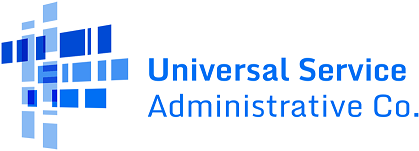Eligible Services Overview
Each year, before the FCC Form 471 application filing window opens, the FCC releases an Eligible Services List (ESL) for the upcoming funding year. This list contains a description of the products and services that will be eligible for discounts, along with additional helpful information such as eligibility conditions for each category of service for each specified funding year.
We suggest that you review this list, the ESL Glossary and Frequently Asked Questions (FAQs) before you file an FCC Form 470 to open your competitive bidding process so you know which services are eligible for the upcoming year.
Funding Categories of Service
The ESL includes the following service types that fall in one of two funding categories:
- Category One Services
- Data Transmission Services
- Internet Access
- Category Two Services
- Internal Connections
- Managed Internal Broadband Services
- Basic Maintenance of Internal Connections
Category One Services
Data Transmission Services and/or Internet Access
This service type covers broadband connectivity and basic conduit access to the internet. These services cannot include charges for content, end-user devices or equipment purchases (other than those necessary for transmission of Category One services), or other services beyond basic conduit access to the internet. This service type also includes Wi-Fi hotspots and mobile wireless Internet services that can be used off-premises, Wi-Fi on school buses, leased lit fiber, leased dark fiber, and self-provisioned broadband networks.
*As of Funding Year 2019, voice services were no longer eligible.
Category Two Services
Internal Connections and Managed Internal Broadband Services (MIBS)
These two service types include eligible products, such as access points, routers, switches, hubs, and wiring.
Eligible products are located at the applicant site and must be necessary to transport information to classrooms or publicly accessible areas of a library.
Services provided by a third party for the operation, management, and monitoring of eligible broadband internal connections components are eligible MIBS (e.g., managed Wi-Fi). Program support is limited to eligible expenses or portions of expenses that directly support and are necessary for the broadband connectivity within schools and libraries.
Applicants may lease equipment as a part of an internal connections request or a MIBS request.
Basic Maintenance of Internal Connections (BMIC)
BMIC covers the repair and upkeep of eligible internal connections. Eligible repair and upkeep services include hardware, wiring, and cable maintenance, along with basic technical support and configuration changes. The products must be eligible for discounts in order for their associated repair and upkeep services to be eligible.
In general, applicants may only receive support for actual work performed under contract on eligible products and parts that are repaired or replaced. Unbundled warranties or fixed price contracts are not eligible for reimbursement, unless the ineligible portions of the warranty or contract can be cost-allocated.
Services such as software upgrades and patches, (including bug fixes and security patches), and online and telephone-based technical assistance and tools that are typically standard fixed priced offerings will continue to be funded as BMIC if the service or equipment would only function and serve its intended purpose with the degree of reliability ordinarily provided with these specific services.
Other Eligibility Issues
Mixed Eligibility
Mixed eligibility refers to products and services for which only a portion is eligible for discounts under the E-Rate program.
In general, a cost allocation, separating the eligible and ineligible costs, is required if a product or service:
- Contains both eligible and ineligible components — for example, a data T1 circuit (eligible) that also has channels on the circuit dedicated to voice services (ineligible);
- Is put to both eligible and ineligible uses — for example, a server that is used for both caching (eligible) and video distribution (ineligible); or
- Is delivered to both eligible and ineligible locations — for example, broadband service delivered to a school run by a church (eligible) and to the church office (ineligible).
There is no single approved method to allocate eligible and ineligible costs. Your method must use tangible criteria that result in a reasonable allocation.
Ancillary Use
If a product or service contains ineligible features on an ancillary basis that are not offered or priced separately, ancillary use of these ineligible features may not require a cost allocation if they meet certain requirements.
